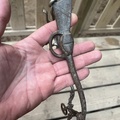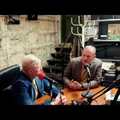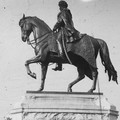According to Zsigmond Josipovich, the goal of horse training is to achieve self-shape. The general made it clear: “Without bending work, there is no release of tension, without the release of tension there is no straightening, without straightening there is no balance, without balance, there is no self-shape, and without self-shape, there is no military horse, jumping horse, hunting horse or school horse!” The text is relentless and accurate, and if this is Josipovich's idea, then there is neither doubt nor appellate.
The thought gap
However, given the above, it is strange that the regulations of the International Equestrian Federation do not consider self-shape to be the goal of training, but do not even mention it. The term self-shape is simply not included in the regulations, and the same is true of the Principals of Riding (The official instruction handbook of G.N.E.F.). Accordingly, riders do not strive for self-shape (Why would they?) and make a huge mistake with this. The gap between the two positions (Josipovich and F.E.I.) is obvious, but for me, there is no doubt which of the two approaches to choose: the traditional Hungaro-Austrian.
Self-shape (Selbsthaltung), self-carriage (Selbsttragen)
The concept of self shape and its obvious need can be illustrated by the analogy of a well-trained dog. A well-trained dog moves with a relaxed leash next to its owner, in all situations he knows, understands his task and performs it independently (without the use of a command word or a leash) based on the owner's body language. The dog adapts to the walking speed, direction, or stops with the owner at the edge of the sidewalk, etc.
The essence of self-shape can also be defined (dog with a hanging leash) that the horse in self-shape does not need secondary aids, ie the use of reins and boots, the rider controls his horse only with his body language, only with the seat (descente de maines, descente de jambes). Meanwhile, sitting on a horse is so relaxed that riding does not require any effort from the rider. But how could it be otherwise? How could you ride to the River Don and back ;) even with the slightest effort? How could you be in the saddle for weeks, months, from morning to night, even with the slightest effort? No way!
A self-shape is a form of a horse. For the horse must be "brought into a certain shape, in which we may maintain our dominion over it in all situations, at all times." What a strange is that horse training are a matter of content and not shape, yet the influence of the rider is related to a certain shape.
Self-carriage is a prerequisite for self-shape. Self-carriage is a learned ability of a horse in which it independently carries its rider in balance. (The ideal saddle-horse has a talent for self-carriage from born.) Self-shape is self-carriage plus willing obedience. It is a kind of attention, concentration on the rider, a spiritual unification that the teacher expects from his student at school and which also results in liveliness, activity, and independent physical collection. Self-shape is a matter of content, even if it is tied to a kind of shape.
The shape
At the beginning of the schooling due to the awkwardly changing balance, the neck position is variable. The consolidation of the balance and with it the neck positions as the result of the training is occurs only gradually. "The more advanced the level of riding of the horse, the more constant the position of the neck until it finally remains unchanged." This is a sign of the consolidation of the balance. If the hind legs are further activated by the rider, the horse will let go of the bit and is bent the neck at the poll. This position of the horse is the shape.
A further improvement in the balance position, a further load-bearing on the hind legs also result in an improvement in shape, so shape means not only the position of the neck and head but the condition of the whole horse. "Shape is the form of the horse in which, according to its balance, it makes the best use of its locomotor organs."
The achievement of the shape requires a relatively great routine from the rider. This is because the achievement of the shape varies from horse to horse, as letting go of the bit and bending the poll can easily lead to loss of balance or decreased hind leg activity and thus, despite good intentions, the rider runs counter to the principles of training, even the form of the neck is similar to the ideal. On the other hand, routine is also necessary to ensure that the acceptable level of contact varies from horse to horse and the rider should not be deterred from temporarily committing to stronger contact in some cases. The point, in this case, is not the situation, but the tendency it shows with the activity of the horse’s hind legs and the activity of its whole body.
Natural shape, acquired shape, self-shape
Natural shape is what the horse offers on its own. The acquired shape is the posture that a rider can achieve with his influences in addition to the natural shape. The acquired shape becomes the natural shape for the horse over time. The acquired shape is most often simply referred to as shape. The consolidated shape is self-shape. In self-shape, the horse stays for a longer period of time without the rider’s influence to do so.
Consolidating self-shape
Self-shape only solidifies as a result of long and gradual work. Since the purpose of horse training is self-shape, it is the constant task of the rider to consolidate the current acquired shape. This is done while maintaining balance and hind leg activity, this is traditionally termed as the alternating co-operation of halt and forward aids. "The horse in self-shape has elevated neck according to the balance, has light contact (the intensity of the contact is equal to the weight of the reins), its movement is quiet, soft and flexible." Self-shape is a prerequisite for the proper performance of more difficult exercises. Of course, it is, since the essence of self-shape is balance and diligent activity in cooperation with the rider’s intentions.
As a result of the horse’s balance gradually evolving, and in parallel, as a result of proper training, the activity of the hind legs also increases, the shape also develops and the shape still acquired today will become a natural posture tomorrow. Horse training achieves its goal when the shape of the horse in the balance of use becomes a natural shape.





